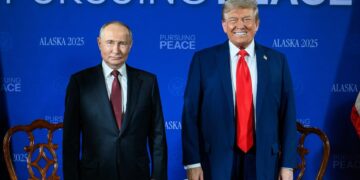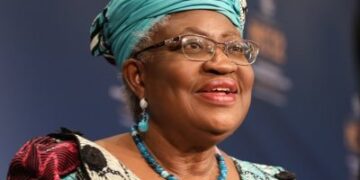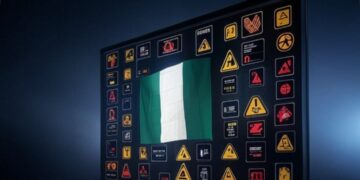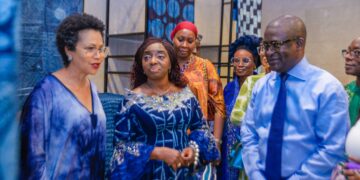The Nigerian naira has shown signs of stabilization in recent weeks, a development that is reshaping the economic landscape of Africa’s most populous nation. According to Bloomberg, the naira appears to be decoupling from its historical reliance on oil prices, Nigeria’s primary foreign exchange earner. Despite a 41% slump in 2024, the currency has stabilized around N1,556 per dollar, with analysts from Deutsche Bank AG and Cardinal Stone projecting it to hover near this level through the end of 2025. This stability follows a period of volatility in the first half of the year, bolstered by improved foreign exchange (FX) liquidity and Central Bank of Nigeria (CBN) reforms.
The CBN has played a pivotal role in this stabilization, injecting $4.7 billion into the FX market in the first half of 2025 to counter capital outflows and support the naira. Reforms such as liberalizing the FX market, clearing a $7 billion backlog, and introducing new financial products to boost diaspora remittances—estimated at $23 billion annually—have enhanced dollar liquidity. The CBN’s measures, including granting licenses to new International Money Transfer Operators (IMTOs) and ensuring timely naira liquidity for remittances, have narrowed the gap between official and parallel market rates to as low as N2 by July 4, 2025.
On July 8, 2025, the naira appreciated slightly to N1,528.33 against the dollar in the official market, up from N1,528.56, and strengthened in the parallel market. This convergence of exchange rates has reduced market distortions and curbed speculative activities, fostering investor confidence. The International Monetary Fund (IMF) has praised these reforms, noting the naira’s ongoing stability as a sign of effective policy implementation.
On July 8, 2025, the naira appreciated slightly to N1,528.33 against the dollar in the official market, up from N1,528.56, and strengthened in the parallel market. This convergence of exchange rates has reduced market distortions and curbed speculative activities, fostering investor confidence. The International Monetary Fund (IMF) has praised these reforms, noting the naira’s ongoing stability as a sign of effective policy implementation.
Economic Impact
The naira’s newfound stability is driving positive economic outcomes. Nigeria’s economy grew by an estimated 3.7% in the first half of 2025, fueled by increased oil production and improved business conditions, according to the Stanbic IBTC Bank Nigeria PMI report. The World Bank projects 3.6% growth for the year, while the Nigerian Economic Summit Group is more optimistic at 5.5%. Rising oil prices have further supported FX reserves, which stood at $37.181 billion by mid-2025, despite a slight decline from $40.88 billion at the end of 2024. This bolstered reserve position enhances the CBN’s capacity to stabilize the naira further.
The naira’s newfound stability is driving positive economic outcomes. Nigeria’s economy grew by an estimated 3.7% in the first half of 2025, fueled by increased oil production and improved business conditions, according to the Stanbic IBTC Bank Nigeria PMI report. The World Bank projects 3.6% growth for the year, while the Nigerian Economic Summit Group is more optimistic at 5.5%. Rising oil prices have further supported FX reserves, which stood at $37.181 billion by mid-2025, despite a slight decline from $40.88 billion at the end of 2024. This bolstered reserve position enhances the CBN’s capacity to stabilize the naira further.
The services sector, particularly the financial and telecommunications industries, has been a key driver of growth, with reforms reducing import dependence and encouraging local production. For instance, CBN Governor Olayemi Cardoso emphasized local manufacturing of key inputs like SIM cards and cables to ease dollar demand, create jobs, and boost economic activity. Additionally, a weaker naira has indirectly spurred foreign direct investment (FDI) by making Nigerian labor and exports more competitive, potentially attracting more foreign investors.
However, challenges persist. Inflation remains above 20%, exacerbating poverty and food insecurity. The naira’s long-term depreciation—trading at N1,600 to the dollar compared to N116 in 2008—has inflated Nigeria’s public debt to N149.39 trillion by March 2025, largely due to the revaluation of foreign debt. Poor infrastructure, particularly electricity, continues to hinder economic activity, and global trade tensions pose risks to export earnings.
Outlook for Stakeholders
The naira’s stability signals a promising trajectory for Nigeria’s economy, with CBN reforms laying the groundwork for a more resilient financial system. Increased FX inflows, rising investor confidence, and structural reforms are fostering a more investment-friendly environment. However, stakeholders must remain vigilant, as global economic uncertainties and domestic structural weaknesses could challenge these gains. Diversifying the economy beyond oil, improving infrastructure, and sustaining monetary policy discipline will be critical to ensuring long-term prosperity.
The naira’s stability signals a promising trajectory for Nigeria’s economy, with CBN reforms laying the groundwork for a more resilient financial system. Increased FX inflows, rising investor confidence, and structural reforms are fostering a more investment-friendly environment. However, stakeholders must remain vigilant, as global economic uncertainties and domestic structural weaknesses could challenge these gains. Diversifying the economy beyond oil, improving infrastructure, and sustaining monetary policy discipline will be critical to ensuring long-term prosperity.
This positive shift offers opportunities for stakeholders to capitalize on Nigeria’s growing economic potential while addressing lingering vulnerabilities to secure sustainable growth.





































